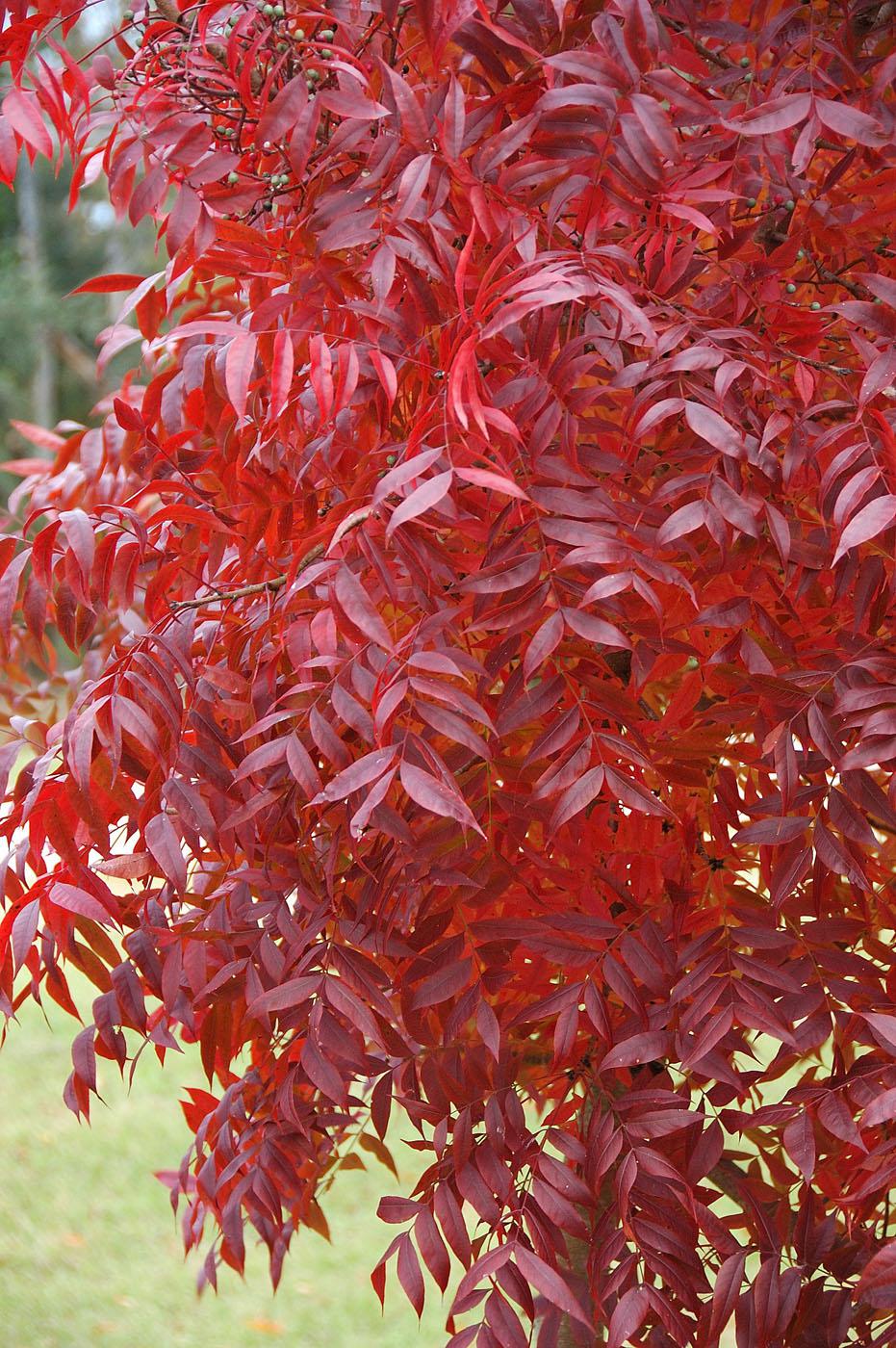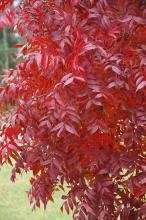Information Possibly Outdated
The information presented on this page was originally released on November 12, 2009. It may not be outdated, but please search our site for more current information. If you plan to quote or reference this information in a publication, please check with the Extension specialist or author before proceeding.
Chinese pistache rocks from coast to coast
By Norman Winter
MSU Horticulturist
Central Mississippi Research & Extension Center
Its fiery yellow, orange and red colors make the Chinese pistache one of the prettiest trees this fall. From coast to coast, horticulturists sing the praises of this tree, and if you plant one or an informal cluster, you, too, will join the chorus.
The Chinese pistache is cold hardy, and it is related to the West Coast nut-producing pistachio tree. It has a pinnate leaf texture similar to its relative, the sumac, and equally stunning fall color, and it comes on a tree that is basically indestructible. When ice or wind storms wreak havoc in neighborhoods, you’ll find this tree the ever-stalwart performer.
The Chinese pistache is small in stature, forming a spreading, umbrella-like canopy, and it reaches a mature size of 40 to 50 feet tall and 30 feet wide. Most of us can count on 30 to 35 feet, which is a great size for today’s urban landscapes.
I am regularly asked about fast-growing species of trees, but how fast a tree grows should not be your highest criteria. If you choose the Chinese pistache, you will get a tree that is long-lived and durable, yet often grows 2 to 3 feet a year.
Fall is a terrific time to plant trees. To grow yours, choose a site in full sun and set out nursery-grown plants in well-drained, moist, fertile soil. Dig the hole three to five times as wide as the root ball but no deeper, so the top of the root ball can be even with the soil profile.
Should you have to wait until next summer to plant, form a 4-inch berm outside the root ball area. This berm should be able to hold 5 gallons of water. After planting, water deeply and apply mulch. Remove the berm after the first year.
The Chinese pistache is native to western China, and this drought-tolerant tree is recommended even in places like New Mexico and Arizona. When selecting your location, remember that it does not like wet winter feet, so choose a site that drains well. It is cold hardy from zones 6 through 9, meaning that from St. Louis to Orlando, gardeners can relish the dark green leaves that become a blaze of fall color.
The Chinese pistache can look a little leggy or lanky in its early years, but it turns from the ugly duckling into the beautiful swan with a nice oval shape.
Container-grown trees rarely require staking. In the second year, prune lanky-looking branches to encourage branch development. Feed in late winter with an 8-8-8 fertilizer, applying 1 pound per 100 square feet of planted area. This is the area from the trunk to just outside the canopy.
The trees are dioecious, meaning they are male or female, but most likely you will not know what you are buying. Both are good. Male trees grow slightly faster and female trees produce an inedible cluster of berries that can be used for decoration. Most horticulturists concur that the male offers the best form and structure.
The Chinese pistache is being widely used for beautification from city and college landscapes to medians. Get in the loop and use them at your home, too.








